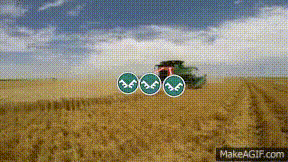Elk Academy Lesson #2: Yield Farming

Greetings, and welcome to your second DeFi lesson from Elk Academy. Last time, we discussed liquidity provisions (LP), which we called “the backbone of DeFi.” That is true, but it is far from the whole story! As many veteran DeFi enthusiasts will tell you, yield farming is where a lot of the real action happens.
If you came to DeFi through the promise of mind-boggling annual percentage returns (APRs), yield farming is where those numbers come from.
I pooled my tokens. Isn’t that yield farming?
No, not yet. Both liquidity provisioning and yield farming generate income, but one is paid out as fees based on trades, while the other is a reward given by the trading platform in exchange for locking (or “staking”) your liquidity with them.
Whereas the trading fees from depositing liquidity are paid back as a fractional percent of the underlying tokens, the rewards from yield farming are often given as a separate token related to the platform. Since you are earning new tokens simply for staking your LP tokens, yield farming is also sometimes referred to as “liquidity mining.”
You can think of LP and farms as nesting dolls for your tokens, which let you double dip on your investment (there is actually a third layer possible, which involves something called “vaults,” but that is for another day).
On ElkDex, ELK is distributed as a farming token in exchange for staking your LP tokens. Since ElkDex only supports farms for liquidity pairs that include the ELK token, by farming on ElkDex, you are actually earning ELK tokens in two ways: as fees (given along with an equal amount of the paired token) and as farming rewards.

Isn’t that free money? What’s the catch?
Sort of. But, yes indeed, there are some important caveats. First, it’s useful to understand why yield farming exists — in other words, why do DeFi platforms offer additional tokens in exchange for locking your LP tokens?
The short answer is that it provides an incentive for you to deposit your valuable tokens into their pools instead of those offered by competitors.
Liquidity providers typically earn a fraction of trade fees, but DEXs also generally take a cut for themselves too. (And here is a good time to note that all trading fees on ElkDex are given to our liquidity providers! Elk does not take a cut.) For DEX operators, it’s a volume game: the more volume, the more profits they generate.
If two platforms are offering the same cut of trading fees (say, 0.3%), giving out an additional token can be a powerful incentive to attract and maintain precious liquidity.
Hungry for APR!!
For various reasons, yields are often much higher just after a project has launched, which has recently given rise to a phenomenon known as “yield chasing,” where hungry investors will move their tokens en masse to a new project in order to capture the early returns. This dynamic, in turn, has resulted in a slew of new questionable projects cropping up that promise high yields but offer few details about their plans or operations.
As with anything in life, if something seems too good to be true, it probably is, and it is important to do your due diligence before deciding to enter a yield farm.
Sometimes, the farming tokens have no actual utility, meaning that their value is (through a circular logic) purely a function of the platform’s popularity. In fact, there are some platforms that do not have their own trading features but instead take deposits of LP tokens from DEXs. Such platforms, generating tokens through farming is their sole reason for existing.
Usually though, platforms will create some sort of utility for their token. Often, this comes in the form of “governance tokens,” which means that owning the tokens also gives you voting rights on the platform, which are weighted proportionally relative to the amount of tokens you own.
Whether it is governance or some other benefit, ideally there will be some added utility or use case to justify the token’s existence, or it is highly unlikely that it will maintain its value over time.
The ELK token, which is distributed as reward on ElkDex farms, is a governance token, meaning that token holders are able to exercise influence over the future direction of the project. But it also comes with multiple additional use cases, such as running a node on ElkNet.